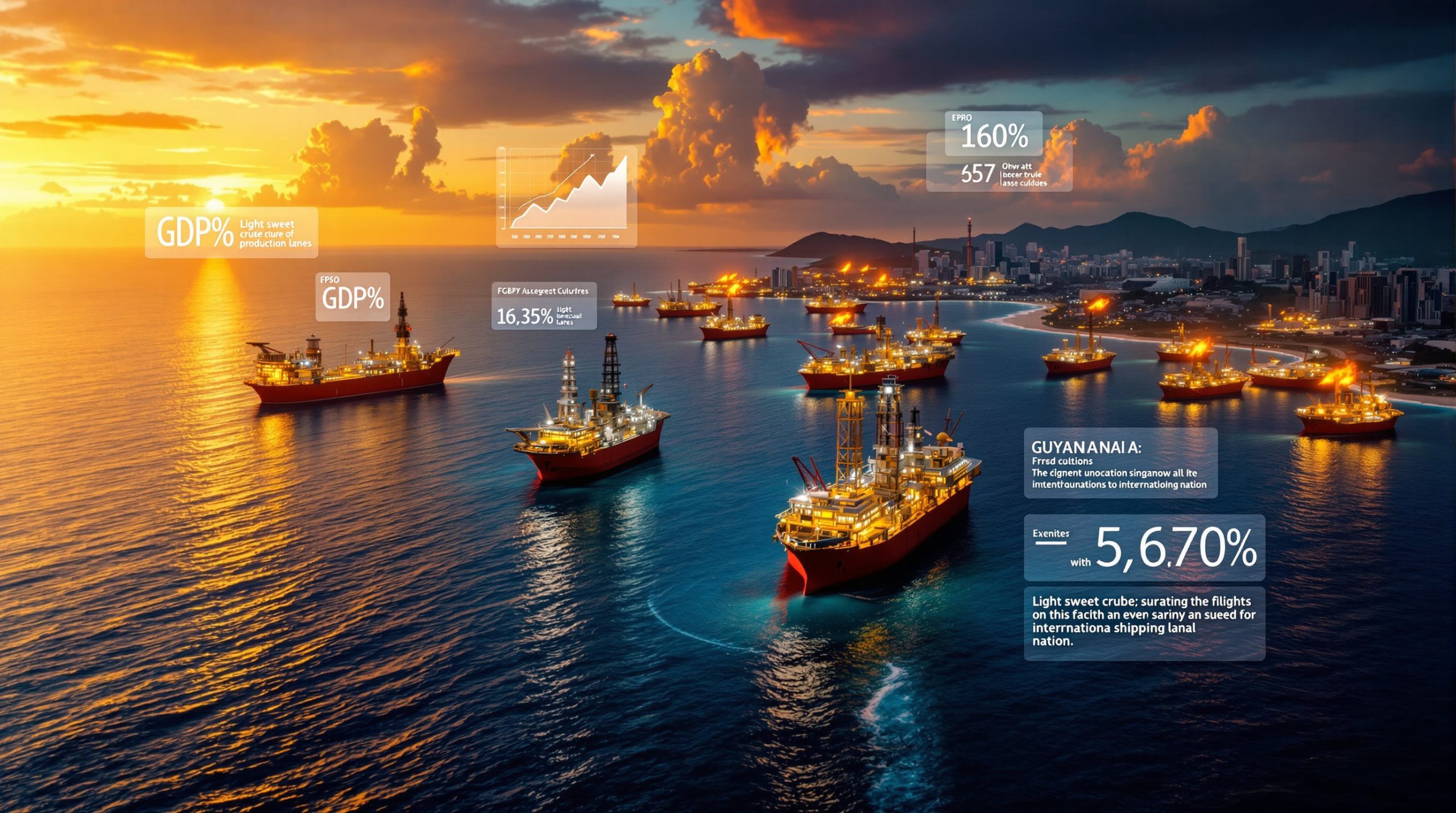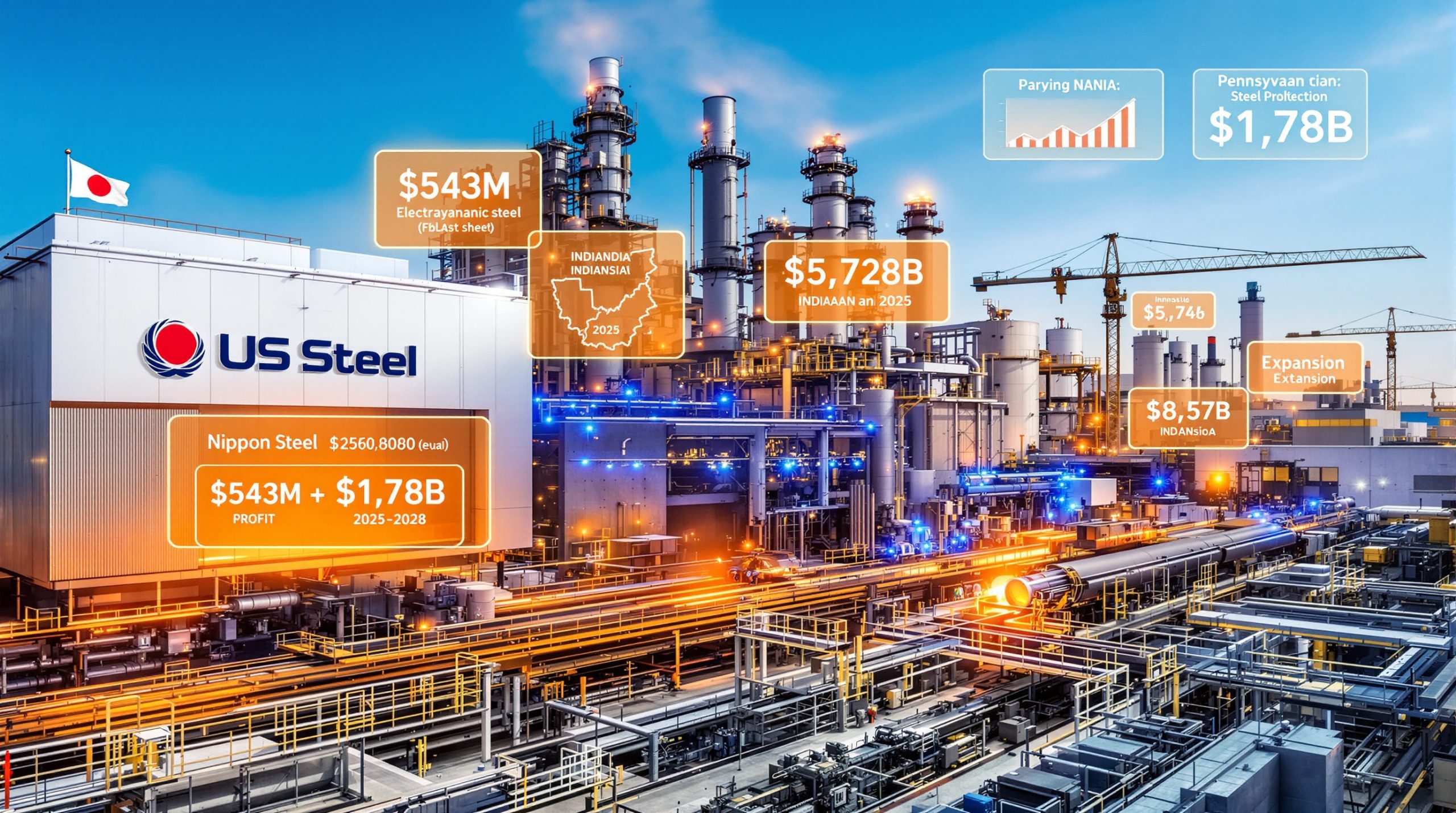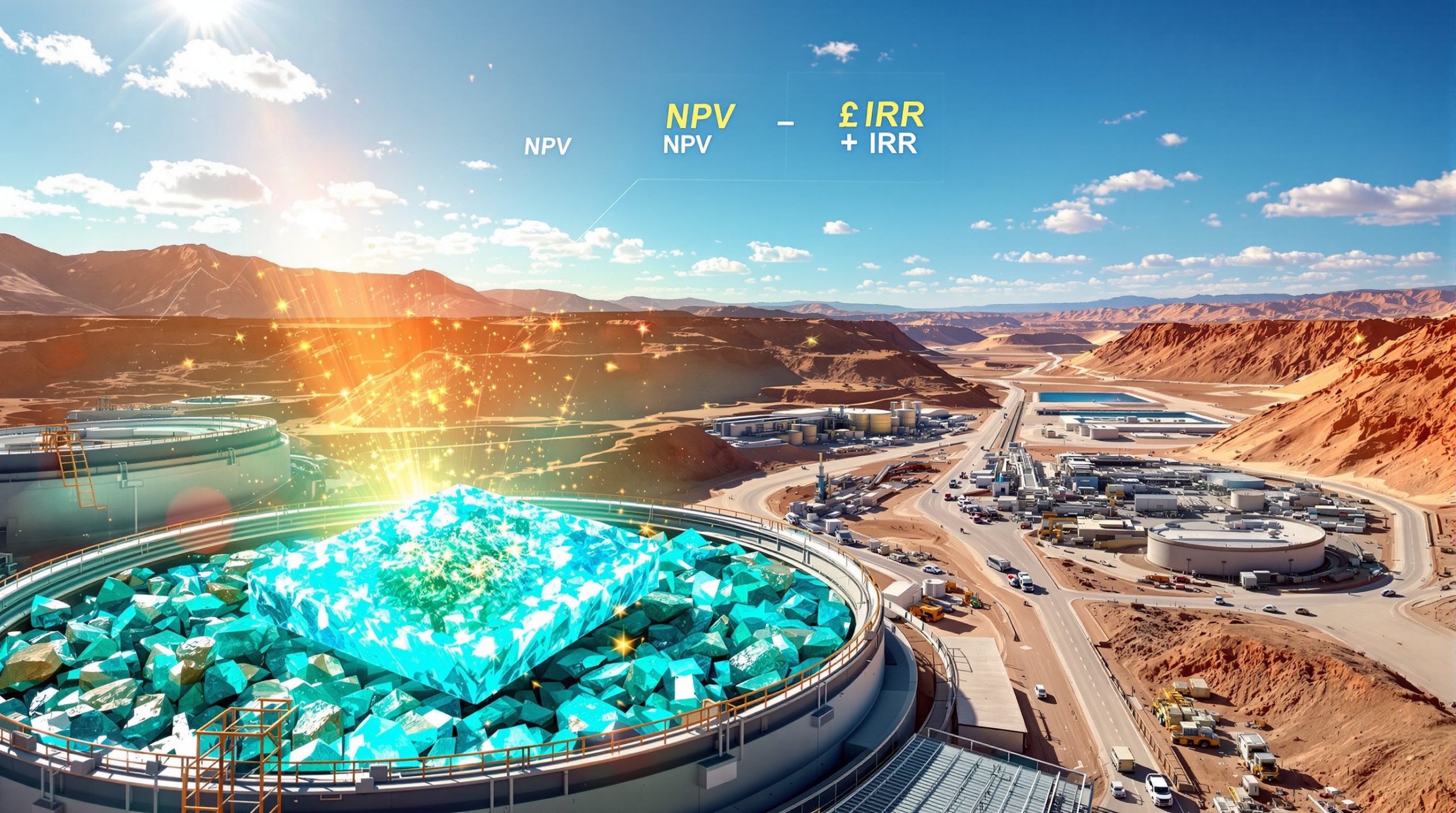Guyana's Oil Boom: Transforming a Nation Through Offshore Discoveries
How did a small South American nation with just 800,000 people become one of the world's fastest-growing petroleum producers? Since 2015, Guyana has experienced an unprecedented economic transformation, shifting from an agricultural economy to an emerging petroleum powerhouse at remarkable speed.
The discovery of massive offshore oil reserves has catapulted Guyana into the global spotlight. With production scaling from zero to over 560,000 barrels per day in just four years, the country now faces the crucial challenge of converting this newfound wealth into sustainable development while avoiding the resource curse that has plagued many emerging producers.
The Scale of Guyana's Petroleum Reserves
The Stabroek Block, spanning approximately 6.6 million acres offshore Guyana, has yielded over 30 significant discoveries since ExxonMobil's initial find in 2015. Current estimates place recoverable resources at more than 11 billion barrels of oil equivalent, positioning Guyana among countries with the highest per-capita oil reserves globally.
This dramatic resource windfall has fundamentally altered Guyana's economic prospects. A nation once primarily dependent on agriculture, mining, and forestry now stands at the threshold of becoming a significant global energy producer.
What Makes Guyana's Oil Boom Unique?
Unprecedented Production Growth Trajectory
Guyana's production growth curve stands nearly unparalleled in modern petroleum history:
| Year | Production (barrels per day) | Year-over-Year Growth |
|---|---|---|
| 2019 | Initial production begins | N/A |
| 2020 | ~120,000 | First full year |
| 2021 | ~220,000 | ~83% |
| 2022 | ~340,000 | ~55% |
| 2023 | ~560,000 | ~65% |
| 2024 | ~760,000 | ~36% |
| 2025 | ~950,000 | ~25% |
| 2030 | ~1,700,000 (projected) | ~79% from 2025 |
This acceleration is particularly remarkable when compared to other petroleum producers. While nations like Qatar and Norway took decades to reach comparable production levels, Guyana has compressed this development timeline into just a few years.
Strategic Offshore Development Projects
Guyana's offshore resources are being developed through a carefully orchestrated series of projects:
-
Liza Phase 1: The first FPSO (Floating Production Storage and Offloading) vessel, Liza Destiny, began production in December 2019, adding 120,000 barrels per day of capacity.
-
Liza Phase 2: The Liza Unity FPSO commenced operations in February 2022, contributing an additional 220,000 barrels per day.
-
Payara: The Prosperity FPSO came online in late 2023, adding another 220,000 barrels per day to Guyana's output.
-
Yellowtail: This development began production in mid-2025, incorporating 250,000 barrels per day of capacity.
-
Future Developments: Multiple projects including Uaru and Whiptail are scheduled to come online between 2026-2030, potentially pushing total production to 1.7 million barrels per day.
Each successive development has incorporated technological improvements and efficiency gains, allowing for accelerated timelines and enhanced production capabilities.
What Economic Impacts Has the Oil Boom Created?
Transformative GDP Growth
The economic transformation catalyzed by Guyana's oil boom has been extraordinary:
| Year | GDP Growth Rate | Oil Sector Contribution |
|---|---|---|
| 2019 | 5.4% | Minimal |
| 2020 | 43.5% | ~40% of growth |
| 2021 | 20.0% | ~60% of growth |
| 2022 | 62.3% | ~70% of growth |
| 2023 | 38.4% | ~75% of growth |
| 2024 | 35.0% | ~80% of growth |
This remarkable growth trajectory has elevated Guyana from one of South America's poorest nations to its fastest-growing economy. By 2025, Guyana's per-capita GDP has surpassed $20,000, a dramatic increase from approximately $5,000 in 2019.
Government Revenue and Sovereign Wealth Management
Guyana's production sharing agreement allocates petroleum revenue as follows:
- 2% royalty on gross production
- Cost recovery capped at 75% of production
- Remaining profit oil split 50/50 between the government and operators
This structure has generated increasing government revenue:
| Year | Government Oil Revenue (USD) |
|---|---|
| 2020 | ~$200 million |
| 2021 | ~$600 million |
| 2022 | ~$1.1 billion |
| 2023 | ~$1.6 billion |
| 2024 | ~$2.5 billion |
| 2025 | ~$3.7 billion (projected) |
To manage this wealth responsibly, Guyana established the Natural Resource Fund in 2019, modeled after Norway's sovereign wealth fund. This fund serves multiple objectives:
- Mitigating resource revenue volatility
- Preserving wealth for future generations
- Funding strategic national development projects
By mid-2025, the fund had accumulated over $8 billion, with strict withdrawal rules designed to prevent mismanagement and ensure sustainable spending patterns.
How Is Guyana Managing Infrastructure Development?
Critical Infrastructure Investments
The oil boom has triggered substantial infrastructure investments across multiple sectors:
-
Energy Infrastructure: Construction of a 300 MW gas-to-energy plant utilizing associated natural gas from offshore fields, with projected completion in 2026. This project aims to reduce electricity costs by 50%.
-
Transportation Networks: Development of deep-water port facilities, expansion of the Cheddi Jagan International Airport, and construction of a new four-lane highway connecting Georgetown to Brazil.
-
Healthcare and Education: Building of six regional hospitals and modernization of educational facilities, including technical training centers focused on petroleum engineering and related fields.
-
Housing and Urban Development: Large-scale housing projects in Georgetown and secondary cities to accommodate population growth and rising living standards.
These investments represent a strategic effort to convert temporary oil wealth into permanent productive capacity and human capital development.
Challenges in Infrastructure Execution
Despite ambitious plans, infrastructure development faces significant challenges:
-
Absorptive Capacity Limitations: Guyana's small population and limited skilled workforce have created bottlenecks in project execution.
-
Institutional Capacity Constraints: Government agencies struggle to effectively manage the scale and complexity of new projects.
-
Environmental Concerns: Infrastructure development raises questions about environmental impacts, particularly in Guyana's ecologically sensitive coastal and rainforest regions.
-
Cost Escalation: Rapid economic growth has triggered inflation in construction costs, reducing the purchasing power of infrastructure investments.
Addressing these challenges requires careful planning, institutional strengthening, and international partnerships to ensure sustainable development outcomes.
What Are the Environmental Considerations of Guyana's Oil Development?
Balancing Petroleum Development and Environmental Protection
Guyana faces a fundamental tension between rapid petroleum development and its historical environmental commitments:
-
Carbon Emissions Profile: Despite maintaining one of the world's lowest carbon footprints historically, Guyana's per-capita emissions have risen significantly with oil production.
-
Deforestation Pressures: Economic growth and infrastructure development have increased pressures on Guyana's rainforests, which cover approximately 85% of the country's land area.
-
Marine Ecosystem Impacts: Offshore drilling and increased maritime traffic pose risks to marine biodiversity in Guyana's coastal waters.
Environmental Safeguards and Initiatives
To address these concerns, several initiatives have been implemented:
-
Low-Carbon Development Strategy: Updated in 2022, this framework aims to balance petroleum development with environmental protection and sustainable growth.
-
Carbon Credits Program: Guyana has expanded its forest carbon credit program, generating approximately $150 million annually from preserving rainforest cover.
-
Enhanced Environmental Regulations: Strengthened environmental impact assessment requirements and monitoring protocols for petroleum operations.
-
Renewable Energy Investments: Commitment to develop 200 MW of solar and hydroelectric capacity by 2030 to diversify the energy mix.
These measures reflect Guyana's attempt to navigate the complex trade-offs between economic development and environmental sustainability in the context of a petroleum-driven boom.
How Has the Oil Boom Affected Guyana's Society and Politics?
Social Transformation and Challenges
The oil price rally has triggered profound social changes:
-
Demographic Shifts: Increased immigration, both from neighboring countries and returning Guyanese diaspora, has altered population dynamics.
-
Rising Inequality: Despite overall economic growth, wealth distribution remains uneven, with urban areas and those connected to the oil industry benefiting disproportionately.
-
Cost of Living Increases: Inflation has accelerated, particularly in housing, education, and healthcare, creating challenges for those not directly benefiting from oil revenues.
-
Cultural Impacts: Traditional sectors like agriculture and fishing have experienced labor shortages as workers migrate to oil-related industries.
Political Dynamics and Governance Challenges
The oil boom has intensified political competition and governance challenges:
-
Electoral Politics: Oil wealth has raised the stakes in Guyana's already contentious electoral landscape, with the 2020 and 2025 elections marked by disputes over who would control the country's newfound resources.
-
Transparency Concerns: Despite improvements in disclosure practices, questions persist about contract terms, revenue management, and beneficial ownership in the petroleum sector.
-
Regional Relations: Guyana's newfound wealth has altered its relationships with neighbors, particularly Venezuela, which has renewed territorial claims to the Essequibo region where much of the offshore oil is located.
-
Institutional Development: Government agencies have struggled to develop the capacity needed to effectively regulate and manage the rapidly growing petroleum sector.
These political and governance challenges highlight the importance of institutional strengthening and transparent resource management in converting Guyana's oil wealth into sustainable development.
What Are the Future Prospects for Guyana's Oil Industry?
Production Growth and Development Timeline
Guyana's oil production is projected to continue its rapid growth:
| Project | Expected Start Date | Production Capacity (bpd) |
|---|---|---|
| Uaru | 2026 | ~250,000 |
| Whiptail | 2027 | ~250,000 |
| Hammerhead | 2028 | ~220,000 |
| Additional Developments | 2029-2030 | ~300,000 |
By 2030, total production capacity is expected to reach approximately 1.7 million barrels per day, cementing Guyana's position as one of the world's significant oil producers.
Long-term Economic Diversification Efforts
Recognizing the finite nature of petroleum resources, Guyana has initiated several diversification strategies:
-
Agricultural Modernization: Investments in high-value agricultural exports, including organic produce and value-added processing.
-
Tourism Development: Expansion of eco-tourism infrastructure and promotion of Guyana's unique biodiversity and cultural heritage.
-
Digital Economy Initiatives: Development of technology parks and incentives for business process outsourcing and digital services.
-
Manufacturing and Value Addition: Efforts to develop downstream industries related to petroleum and natural gas, including petrochemicals and fertilizers.
These diversification efforts aim to create a more resilient economy that can sustain growth beyond the petroleum boom.
How Can Guyana Avoid the "Resource Curse"?
Learning from Global Experiences
Guyana faces the challenge of avoiding the "resource curse" that has affected many resource-rich developing nations. Key strategies include:
-
Fiscal Discipline: Maintaining prudent spending policies and avoiding excessive borrowing against future oil revenues.
-
Institutional Strengthening: Building robust regulatory agencies and oversight mechanisms to ensure transparent resource management.
-
Human Capital Development: Investing in education and skills development to create a workforce capable of driving economic diversification.
-
Local Content Development: Implementing policies to increase local participation in the petroleum sector and related industries.
Critical Success Factors for Sustainable Development
Several factors will determine whether Guyana successfully converts its oil wealth into sustainable development:
-
Political Stability: Maintaining democratic governance and peaceful transitions of power despite heightened competition for resource control.
-
Effective Resource Management: Implementing transparent and accountable systems for managing petroleum revenues and investments.
-
Environmental Stewardship: Balancing petroleum development with protection of Guyana's globally significant rainforests and biodiversity.
-
Inclusive Growth: Ensuring that benefits from oil development reach all segments of society, including rural communities and indigenous populations.
By addressing these factors proactively, Guyana has the opportunity to become a model for successful resource-led development in the 21st century.
What Lessons Does Guyana's Experience Offer Other Emerging Producers?
Transferable Insights for Developing Nations
Guyana's experience offers valuable lessons for other countries experiencing resource discoveries:
-
Early Institutional Preparation: The importance of establishing governance frameworks before production begins.
-
Sovereign Wealth Management: The value of creating transparent mechanisms for saving and investing resource revenues.
-
Balanced Development Approach: The need to invest in both physical infrastructure and human capital development.
-
Environmental Integration: The possibility of balancing resource extraction with environmental protection through strategic planning.
Regional Implications
Guyana's success has significant implications for the wider Caribbean and South American region:
-
Shifting Economic Power: Guyana's rapid growth has altered regional economic dynamics and diplomatic relationships.
-
Exploration Incentives: The scale of Guyana's discoveries has stimulated increased exploration activity in neighboring countries.
-
Regional Integration: Opportunities for enhanced economic integration through energy exports and infrastructure development.
-
Shared Challenges: Common issues related to maritime security, environmental protection, and sustainable development.
As Guyana continues its transformation, its experience will provide valuable oil price movements insights for resource governance and development strategies worldwide.
Navigating the Opportunities and Challenges Ahead
Guyana's oil boom represents both an extraordinary opportunity and a profound challenge. The rapid development of offshore petroleum resources has created unprecedented economic growth and the potential for transformative development. However, realizing this potential requires addressing complex challenges related to governance, environmental protection, and inclusive growth.
The coming years will be critical in determining whether Guyana can convert its temporary resource wealth into sustainable development. Success will depend on strengthening institutions, implementing prudent fiscal policies, investing in human capital, and diversifying the economy beyond petroleum.
If managed effectively, Guyana's oil price crash insights could provide valuable lessons for mitigating risks, while the country's WTI and Brent outlook remains relevant to its export strategy. Additionally, exploring connections with mining industry trends could help Guyana create a more diversified resource economy that benefits generations to come. If mismanaged, they could lead to environmental degradation, economic instability, and social division. The choices made today will shape Guyana's future for decades to come.
Looking to Capitalise on the Next Major Mineral Discovery?
Discovery Alert instantly identifies significant ASX mineral discoveries through its proprietary Discovery IQ model, transforming complex geological data into actionable investment opportunities. Explore why historic discoveries generate substantial returns by visiting Discovery Alert's dedicated discoveries page and begin your 30-day free trial today.




